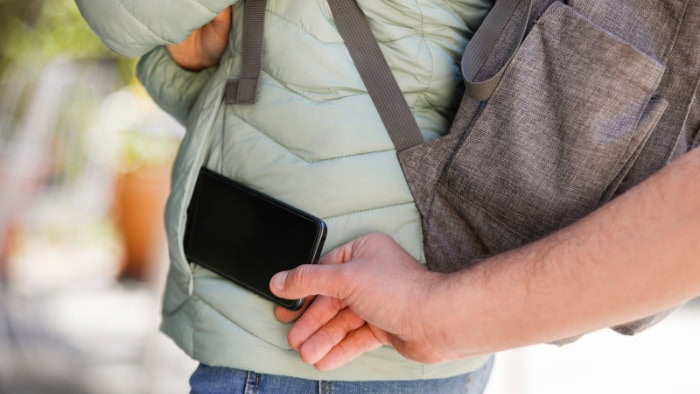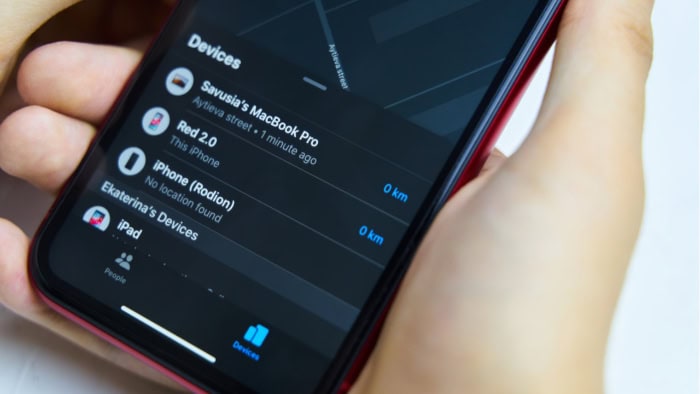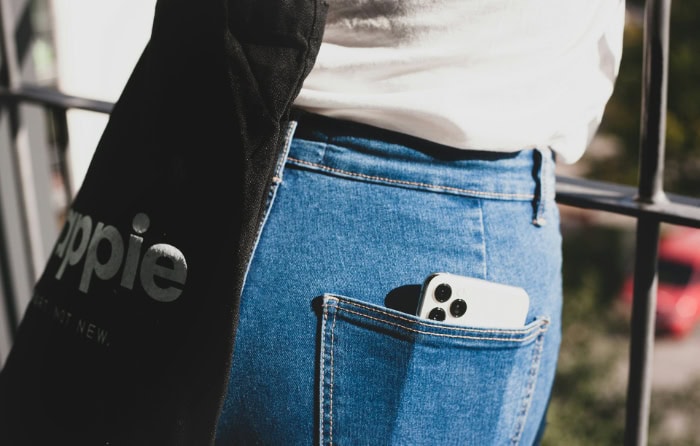What to Do if Your Phone Is Lost or Stolen: Act Fast

Panic strikes as you reach for your pocket, only to find it empty. Your smartphone, the device that keeps you connected to the world, is nowhere to be found.
In that moment, a million thoughts race through your mind: your contacts, photos, banking apps, and sensitive information are all suddenly at risk. Losing a smartphone or falling victim to theft is a modern-day nightmare that affects millions of people every year.
The emotional toll and potential consequences can be overwhelming, leaving you feeling helpless and exposed. But fear not, for there are proactive measures you can take to mitigate the damage and regain control of the situation.
Immediate Steps to Protect Your Phone and Data
When you realize your smartphone is lost or stolen, acting quickly is crucial to minimize potential risks and increase the chances of recovery. The first few hours are critical, and taking the right steps can make a significant difference in protecting your personal information and preventing unauthorized access to your device.
Locate Your Phone Remotely
Most modern smartphones come equipped with built-in tracking features, such as “Find My Device” for Android or “Find My” for iOS. These tools allow you to locate your phone on a map, provided it is turned on and connected to the internet.
By logging into your Google or iCloud account from another device, you can attempt to pinpoint the location of your missing phone. If the device is nearby, you can even make it ring or display a message on the screen to help you find it.
Lock Your Device and Erase Data
If you are unable to locate your phone or suspect it has been stolen, the next step is to remotely lock the device to prevent unauthorized access. Both Android and iOS offer features to lock your phone and display a custom message on the screen, such as contact information for returning the device.
Additionally, you can choose to erase all data from the phone remotely, ensuring that your personal information does not fall into the wrong hands. This action is irreversible, so only use it as a last resort if you believe your phone is unrecoverable.
Suspend Cellular Service
Contacting your mobile carrier is another essential step in protecting your phone and preventing unauthorized use. By reporting your device as lost or stolen, your carrier can suspend cellular service, rendering the phone unable to make calls, send texts, or use mobile data.
This action also prevents the thief from incurring charges on your account. When you contact your carrier, be prepared to provide your account information and the device's IMEI or MEID number, which can usually be found on the phone's packaging or your account settings online.
Report the Incident to Law Enforcement
Filing a police report is an important step, especially if you suspect your phone was stolen. While the police may not always be able to recover your device, having an official report can be helpful when dealing with insurance claims or if the phone is recovered later.
When filing the report, provide as much information as possible, including the device's make, model, and serial number, as well as any details about when and where the phone was lost or stolen. Keep a copy of the police report for your records, as it may be required for further actions.
Safeguarding Your Personal Information

In the unfortunate event of a lost or stolen smartphone, protecting your personal information should be a top priority. Our phones contain a wealth of sensitive data, including emails, text messages, photos, and access to various online accounts.
Taking swift action to secure your personal information can help prevent identity theft, financial fraud, and other potential consequences.
Updating Passwords and Enabling Two-Factor Authentication
One of the first steps in protecting your personal information is to change the passwords for your important accounts, such as email, social media, and online banking. This is especially crucial if you had any passwords saved on your lost or stolen device.
When creating new passwords, choose strong, unique combinations of letters, numbers, and symbols, and avoid using the same password across multiple accounts. Additionally, enable two-factor authentication (2FA) whenever possible.
2FA adds an extra layer of security by requiring a second form of verification, such as a code sent to another device or an app, before granting access to your accounts.
Monitoring Financial Accounts and Credit Reports
If your lost or stolen phone had any banking apps or stored credit card information, it is essential to monitor your financial accounts closely for any suspicious activity. Contact your bank and credit card companies to alert them of the situation and request heightened monitoring or even a temporary freeze on your accounts if necessary.
Regularly review your bank statements and credit card transactions for any unauthorized charges, and report them immediately if detected. Additionally, consider checking your credit reports to ensure no new accounts have been opened in your name without your consent.
Protecting Work-Related Data
For many people, smartphones also serve as a tool for work, containing sensitive company information, client data, and access to corporate networks. If your lost or stolen phone had any work-related data, notify your employer immediately.
Your company's IT department can take appropriate measures to protect confidential information, such as remotely wiping the device, revoking access to company systems, or changing passwords for work-related accounts. Follow your employer's guidelines and cooperate with their efforts to mitigate potential risks to the company's data security.
Retrieving or Replacing Your Lost Phone
After taking the necessary steps to protect your personal information and data, the next focus should be on recovering your lost or stolen phone or obtaining a replacement device. While the thought of losing your phone can be distressing, there are several options available to help you get back up and running with a working device.
Offering a Reward for Return
If you have lost your phone in a public place or suspect that someone may have found it, consider leaving a message on the lock screen or with local businesses offering a reward for its safe return. Many people are more likely to return a lost item if there is an incentive, and offering a modest reward can be more cost-effective than purchasing a new device outright.
Be cautious when arranging to retrieve your phone from a stranger, and always meet in a safe, public location.
Filing an Insurance Claim
If you have phone insurance, either through your carrier or a third-party provider, you may be able to file a claim to replace your lost or stolen device. Contact your insurance provider to report the incident and initiate the claim process.
Be prepared to provide details about when and where the phone was lost, as well as any police report numbers if applicable. Depending on your coverage, you may be required to pay a deductible before receiving a replacement phone.
Review your insurance policy to understand the specific terms and conditions of your coverage.
Selecting a Replacement Device
If retrieving your lost phone is not possible, or if you decide to purchase a new device, consider your options carefully. Assess your needs and budget when selecting a replacement smartphone.
If you are due for an upgrade, this may be an opportunity to explore newer models with enhanced features and capabilities. However, if you are looking to minimize costs, consider purchasing a refurbished or second-hand device from a reputable seller.
Ensure that any replacement phone is compatible with your carrier and can be activated on your existing plan.
Recognizing the Consequences of a Lost or Stolen Phone

Losing a smartphone or having it stolen can have far-reaching consequences beyond the mere inconvenience of being without a device. In today's digital age, our phones contain a vast amount of personal information, financial data, and sensitive content that, if fallen into the wrong hands, can lead to serious risks and impacts.
Identity Theft and Financial Fraud
One of the most significant risks associated with a lost or stolen phone is the potential for identity theft. If your device contains personal information such as your full name, address, social security number, or bank account details, a malicious actor could use this data to impersonate you and commit fraud.
They may attempt to open new accounts, apply for loans, or make unauthorized purchases in your name. Additionally, if your phone has stored payment information, such as credit card numbers or mobile wallet apps, a thief could make fraudulent transactions, leading to financial losses and potential damage to your credit score.
Compromised Privacy and Reputational Risks
Beyond financial risks, a lost or stolen phone can also compromise your privacy and potentially harm your reputation. Our smartphones often hold intimate details of our lives, including personal photos, videos, text messages, and emails.
If this content is accessed by unauthorized individuals, it could be used to blackmail you, or worse, shared publicly without your consent. The exposure of sensitive personal information can lead to embarrassment, strained relationships, and even professional consequences if the content is deemed inappropriate or damaging to your reputation.
Legal Implications and Liability Concerns
In some cases, the loss or theft of a smartphone can also result in legal implications and liability issues. If your phone contains confidential business information or client data, your company may hold you responsible for any breaches or leaks that occur as a result of the lost device.
This could lead to disciplinary action, termination of employment, or even legal action if the company suffers financial losses or reputational damage. Additionally, if your phone is used to commit illegal activities, such as harassment or stalking, you may be held liable if you failed to report the device as lost or stolen promptly.
Conclusion
Losing a smartphone or falling victim to phone theft can be a stressful and overwhelming experience. However, by taking swift action and following the steps outlined in this article, you can minimize the potential risks and negative consequences.
Immediately utilizing remote tracking features, locking your device, and suspending cellular service can help prevent unauthorized access to your personal information. Changing passwords, enabling two-factor authentication, and monitoring financial accounts are crucial for protecting your data and identity.
When attempting to recover your phone or obtain a replacement, consider all available options, such as offering a reward, filing an insurance claim, or selecting a suitable replacement device. Most importantly, recognize the serious risks associated with a lost or stolen phone, including identity theft, financial fraud, privacy breaches, and potential legal liabilities.
By staying informed and prepared, you can navigate this challenging situation with greater confidence and peace of mind. Taking proactive measures to secure your device and regularly backing up important data can help minimize the impact if you ever find yourself in this unfortunate circumstance.


